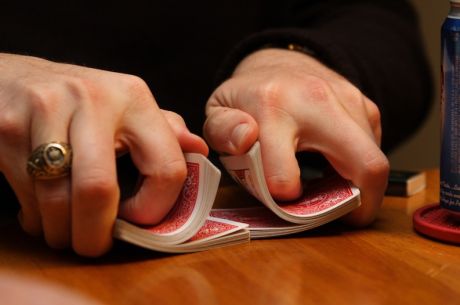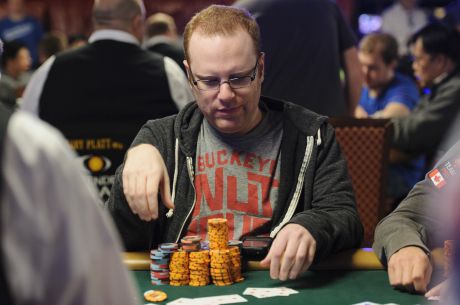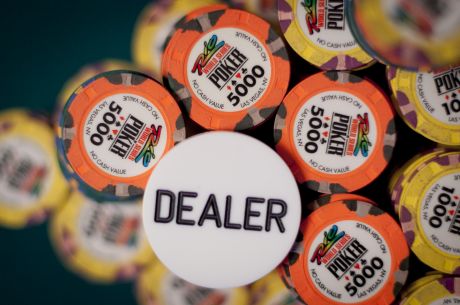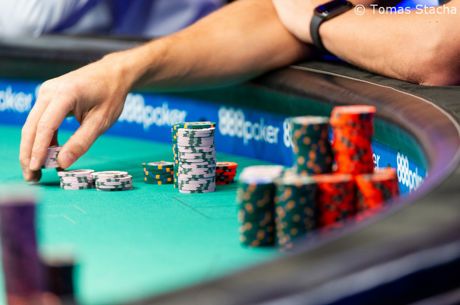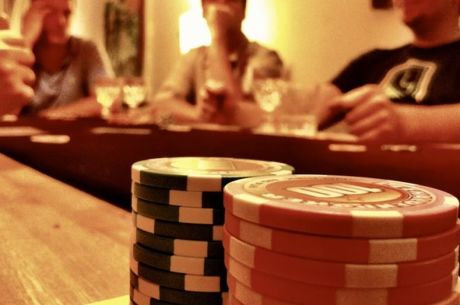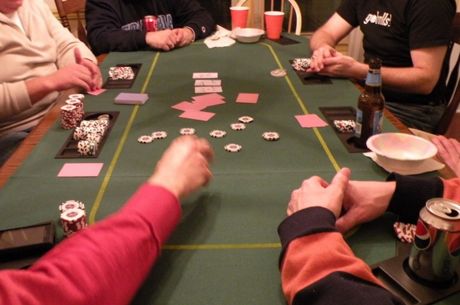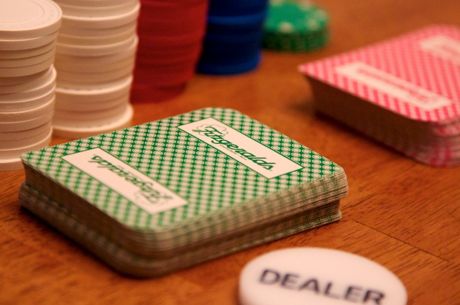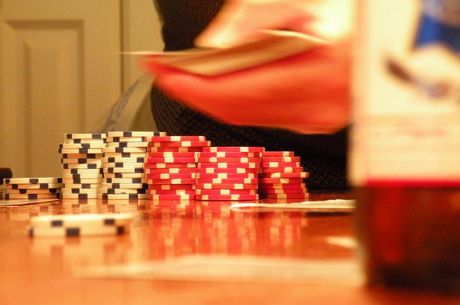Home Game Heroes: The Strategy of “Dealer’s Choice” Games
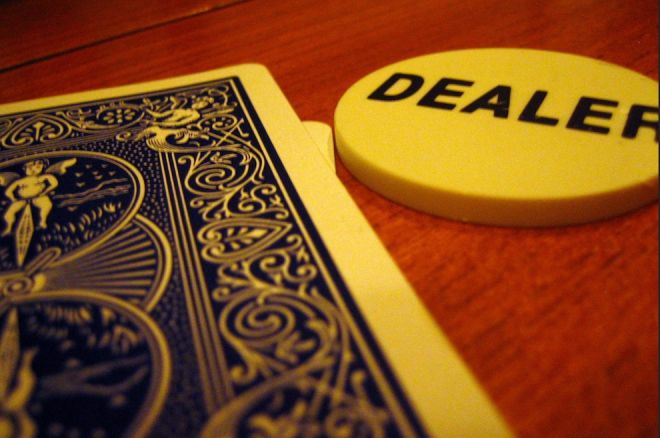
Many home games are played “dealer’s choice.” This means that the deal rotates from player to player, one hand at a time, with each dealer given the responsibility of choosing which variant of poker to deal. Which game do you pick?
Assuming there are no restrictions on what games you may call, you may want to call a game with at least some advantage for the dealer. Games that have sequential betting, beginning with the dealer’s left, are examples of games with a built-in dealer advantage. If the first player to the dealer’s left starts the betting action, then the dealer gets to see the action of every other player at the table before he decides on his own action — a decided advantage.
Hold’em, Omaha, and draw poker are the three chief varieties of games that fall into this category. Meanwhile stud games, whether played high, low, or high-low, do not have a positional advantage for the dealer. Unless you judge your skill as much greater in these stud games than your opponents, you should consider staying away from them when it is your turn to call the game, since the betting action depends entirely on the up cards, giving no advantage to the dealer.
Draw games give the dealer an additional advantage, since the decision to draw is done sequentially, ending with the dealer. Knowing how many cards your opponents are drawing before you have to draw gives you an edge. And the more draws per game, the bigger the advantage.
This advantage gets amplified even further in high-low variants of draw. The knowledge of how your opponents are drawing can be especially useful in letting you know whether they are trying to win high or low, providing you with another enormous advantage.
Games with replacement cards at the end (or multiple drawing rounds) are similarly beneficial to the dealer, if they are played with sequential as opposed to simultaneous replacement of the cards. Your opponent’s election of a replacement card is a window into his likely holding, providing an advantage to the last person to reveal such information — that is, the dealer.
Consider the following example from a $5/$10 fixed-limit dealer’s choice home game. Let’s say you are the dealer and call 5-card single draw, high-low declare, with a replacement at the end prior to the simultaneous (chip in hand) declare. If not familiar, read on — it’s easy enough to follow how this game is played, and well illustrates the benefit of calling a game with a significant dealer advantage.
You deal yourself 7♣4♠2♣2♠A♣. The first two players check, then the third player opens for $5 followed by three callers. You call also, meaning five of you remain for the initial drawing round. The first player, who was the initial bettor, then draws one, the next player three, the next player three, and the last player draws two.
You already have an enormous amount of information in this game, even before you have to decide how many cards to draw. You realize that the second and third player are surely going for high, because with three-card draws each they almost certainly are drawing to a pair. The fourth player, who didn’t raise pre-draw, is probably making a bad two-card draw for high or low. And the first player with a one-card draw probably has two pair, since he initiated the betting and only drew one card.
Armed with a good inference that you will likely be the best low draw, you decide not to draw to your pair of deuces but to your low. You get the 9♣, giving you 9♣7♣4♠2♣A♣ — a mediocre low or a drawing hand to a very strong high and possible two-way hand.
There is a betting round. The first player bets again, the next player calls. The next player raises. The next player, who had the two-card draw, folds. Once again, you have a lot of information before you have to make a decision.
You figure that the first player bet his two pair again, probably having not made his full house (because of the very long odds he was bucking), but not wanting his drawing opponents to get a free card. You figure the next player didn’t make a great high hand but wants to draw one card again to see if he can hit a winner. The raising player you figure for trips or better. You have a decent but not great low. But you’re also thinking you’re probably the only player going low, giving you a likely lock on half of the eventual pot. So you raise again. The first player calls, the next player folds, and the final player caps the betting. You and the third player call along.
For the replacement round, the first player immediately pushes a card forward for replacement and the other player also replaces a card. You have a decision to make. You can toss your 4♠ and go for a flush and a 9-low, or stand pat with your 9-7-low. Thinking through the action you figure, once again, that the first player must not have a low — if he did, he would be unlikely to try and replace a card, and would have stood pat with his low. You know the second player must be going high since he made a three-card draw. And you also know he raised, so you figure he must have at least high trips. So you decide not to draw to a flush (which may be a losing high hand even if it hits), but play your mediocre low.
After the replacement round there is another betting round. Your first opponent bets. The second opponent calls. You, with what you judge to be the only low (even if mediocre), raise. Your first opponent reraises, the second opponent calls, and you cap it, with both players calling. You now declare. Your opponents declare high and you declare low. Your first opponent has tens full. Your second opponent has three kings. You win half of an enormous pot, mostly due to the fact that you had the advantage of seeing how everyone acted before you had to act.
If you are hosting the game, you can neutralize the dealer advantage easily enough (though if it gives you an edge you may not want to). Some home poker games have the initial betting action progress clockwise during the play of the hand, so the bet after the flop starts two to the left of the dealer, and the bet after the turn starts three to the left of the dealer, and so on. Nearly all declare games, as in the example game above, have a simultaneous declare. (Imagine how a sequential declare, beginning to the dealer’s left, would vastly increase the dealer advantage.)
But these are all partial methods that fail to fully neutralize the dealer advantage. The only sure-fire method is to have each player call a round of a game, such as is done in the “Dealer’s Choice” events at the World Series of Poker. Doing that ensures every player deals the same game, giving the dealer advantage to every player in turn before the next game is called.
Photo: “Dealer,” Adam Cutler. Creative Commons Attribution-NoDerivs 2.0 Generic.
Ashley Adams has been playing poker for 50 years and writing about it since 2000. He is the author of hundreds of articles and two books, Winning 7-Card Stud (Kensington 2003) and Winning No-Limit Hold’em (Lighthouse 2012). He is also the host of poker radio show House of Cards. See www.houseofcardsradio.com for broadcast times, stations, and podcasts.
Want to stay atop all the latest in the poker world? If so, make sure to get PokerNews updates on your social media outlets. Follow us on Twitter and find us on both Facebook and Google+!

